Outremer 51
Outremer 51 Owner’s Review: Archer
A big thank you to Seth Hynes from the Sailing Family for his insights into Archer: his Outremer 51 in our catamaran owner´s reviews section. There is some great information here for anyone who is thinking about buying one of these blue water Outremer Catamarans now or in the future.
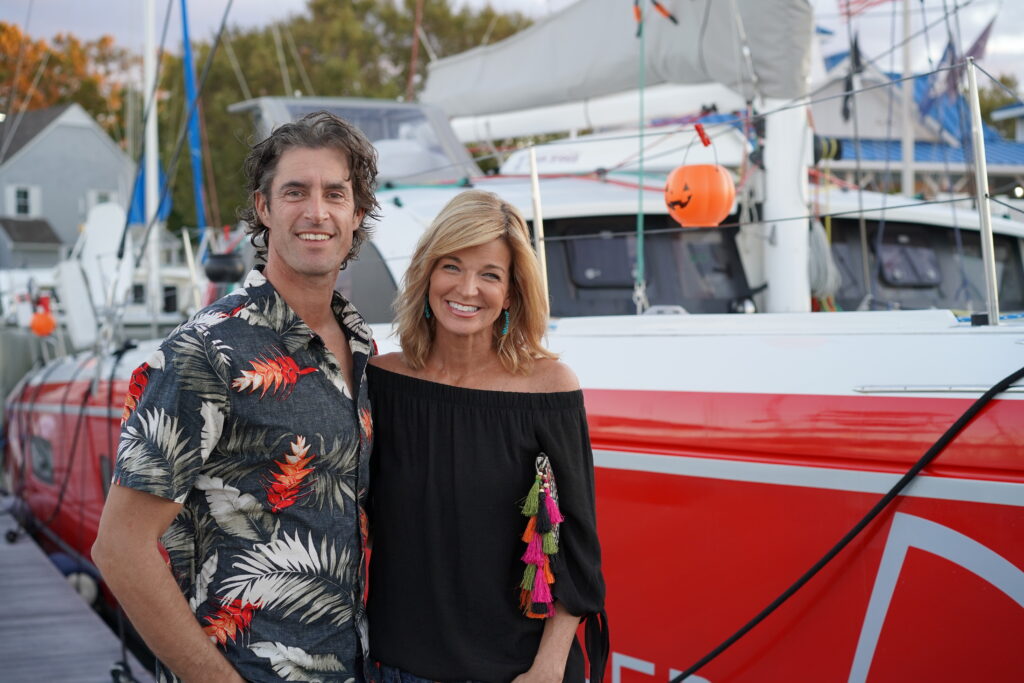
Seth and Elizabeth have now sold Archer (Seth is now working for HH Catamarans), but this interview remains a great guide to the Outremer 51.
Can you tell us a bit about yourself and your boat:
My name is Seth Hynes. Two years ago my wife, Elizabeth, and I bought “Archer,” a second hand 2014 Outremer 51 “owner’s version” performance cruising catmaran. We are currently sailing around the world with our three boys. What follows is a detailed review of the pros and the cons for this boat. Please note we are not sponsored by Outremer and this is an honest account of what we’ve found.
Why did you choose the Outremer 51?
Simply put, we think this is the perfect family cruising boat. She’s an example of three decades of learning being put into one vessel with the simple design brief of “being able to sail around the world multiple times safely and reliably, with outstanding performance and comfort.” This boat features a quality build standard and performance metric not normally found in the Catamaran category. Furthermore, she’s backed by one of the best post-sales customer service departments in the industry. We couldn’t be happier with our purchase.
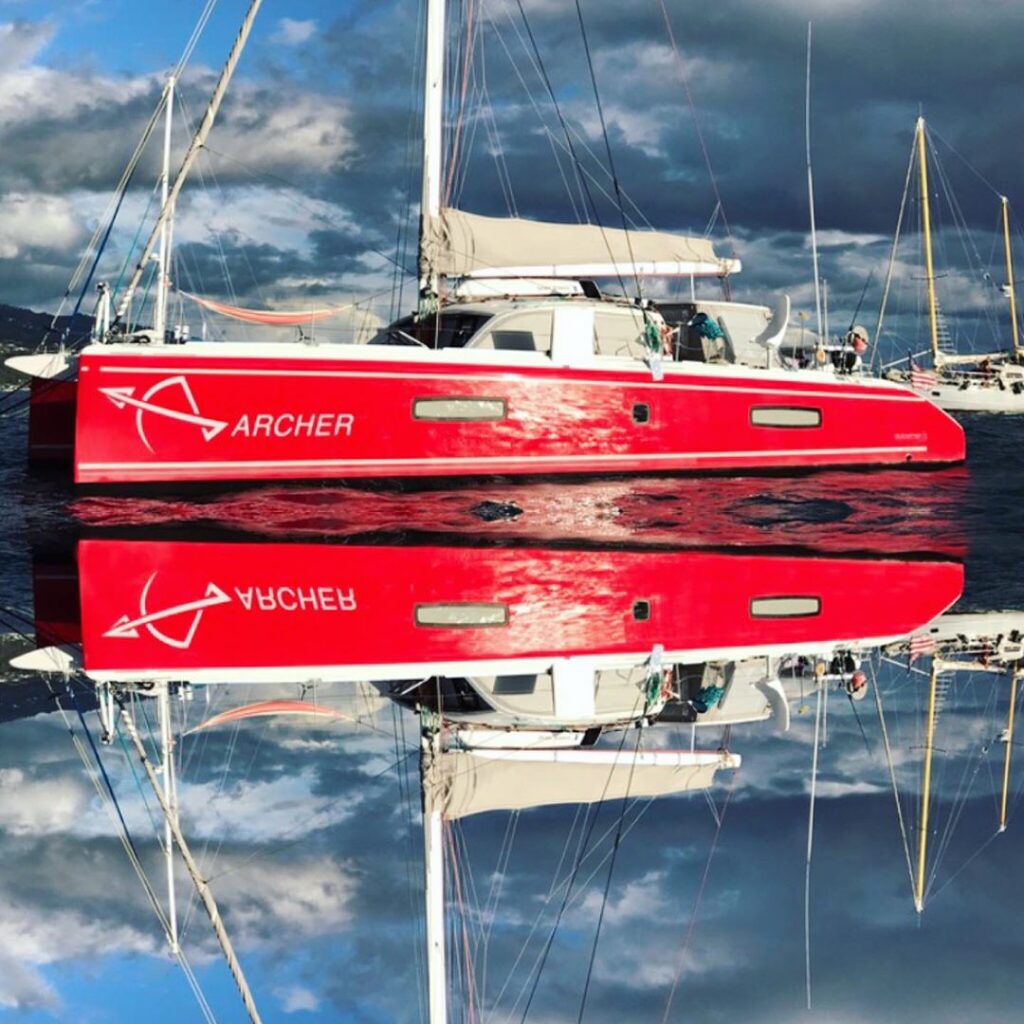
When was she launched?
She was launched in 2013 as one of the newer 51 foot models (15 meters). This was the year that Outremer lengthened the stern of of their 49 foot model, redesigned the interior and improved weight savings through the build process. While the 49′ was a great boat, they only made it better with the launch of the 51′.
What’s the best thing about her?
Sailing Performance. We have been delighted with how well this boat sails at all angles. We cruise comfortably at 9-10 knots and use a 215 nautical mile average as our ‘safe’ planning distance. We point as well as most cruising monohulls and we blast by them on a beam reach or a run. Our top sustained boat speed was a downwind run between Fakarava and Tahiti where we had the boat comfortably sailing 19 knots sustained (I think we were sailing at the same speed as the waves and the effect was one of flat seas in the middle of the Pacific Ocean). This is the boat that will lure a serious monohull lover over to the ‘dark side’ of catamaran appreciation.
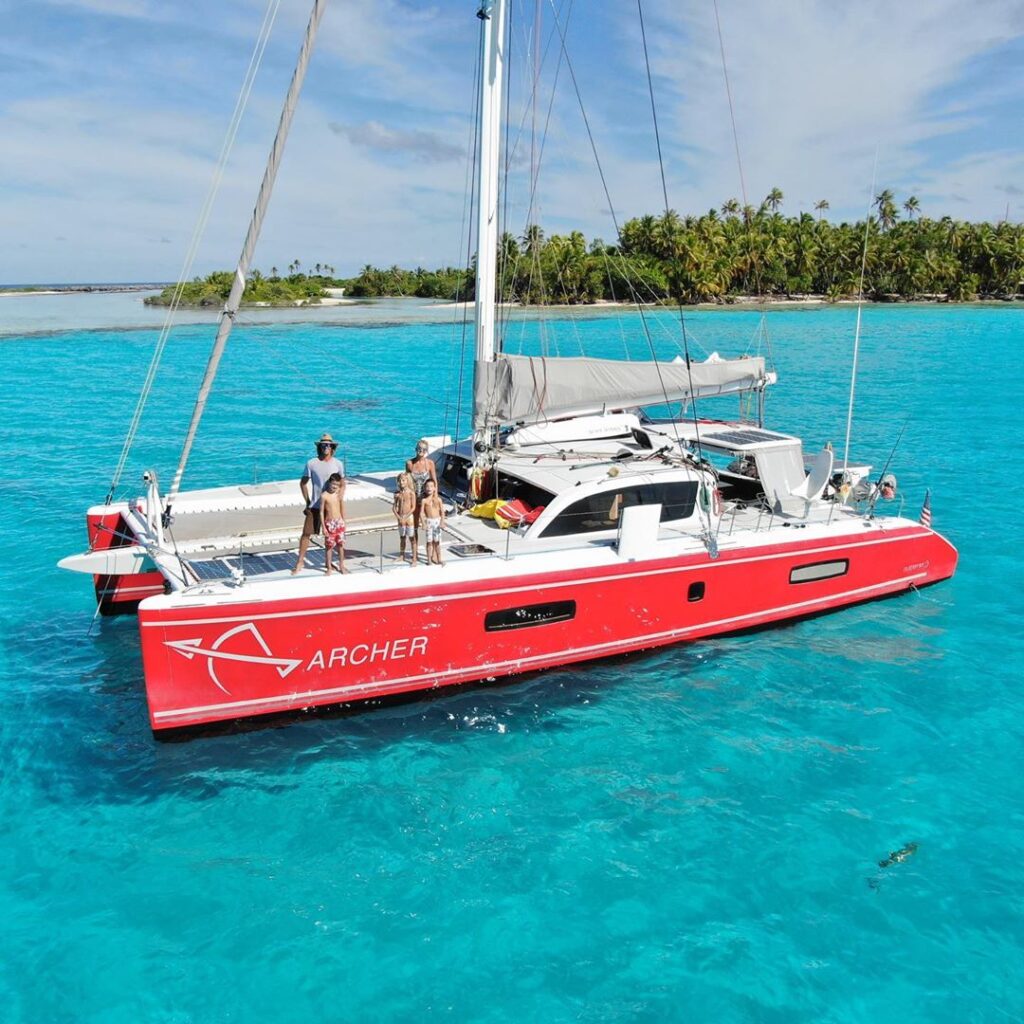
What would you change, if anything?
Head room! Ha Ha… That’s a little unfair as I’m 6’4″ (193cm), but the saloon roof is a little short on the port and starboard sides. I can stand up in the middle, but near the steps down to the hulls I routinely hit my head. For the most part I can stand up everywhere, but in that particular area I wish it was slightly higher.
What are the “Must Have” Options buying new in your opinion?
The boat comes pretty stocked already, but the must haves are definitely the tiller and tiller seat options (this is kind of the brand’s DNA and I would think an Outremer without them would have a harder time selling on the used market) – besides, they’re also great fun and an excellent safety backup. Our boat also boasts a protected helm seat, which is an excellent option if you like to sit at the helm in inclement weather as we do.
What are the “Nice to Have Options”?
Nice to have options include a Carbon Rotating Mast (which I would only get if you are considering racing competitively or find yourself frequently sailing in light air). Similarly, Carbon Fiber sails or a Park Avenue Boom seem like overkill to me on a what is really a cruising cat, but if you have the money and don’t mind replacing them sooner, then go for it! We also have the carbon fiber reinforced longeron upgrade which allows for a self-tacking staysail, which is really helpful in achieving those tight upwind sailing angles.
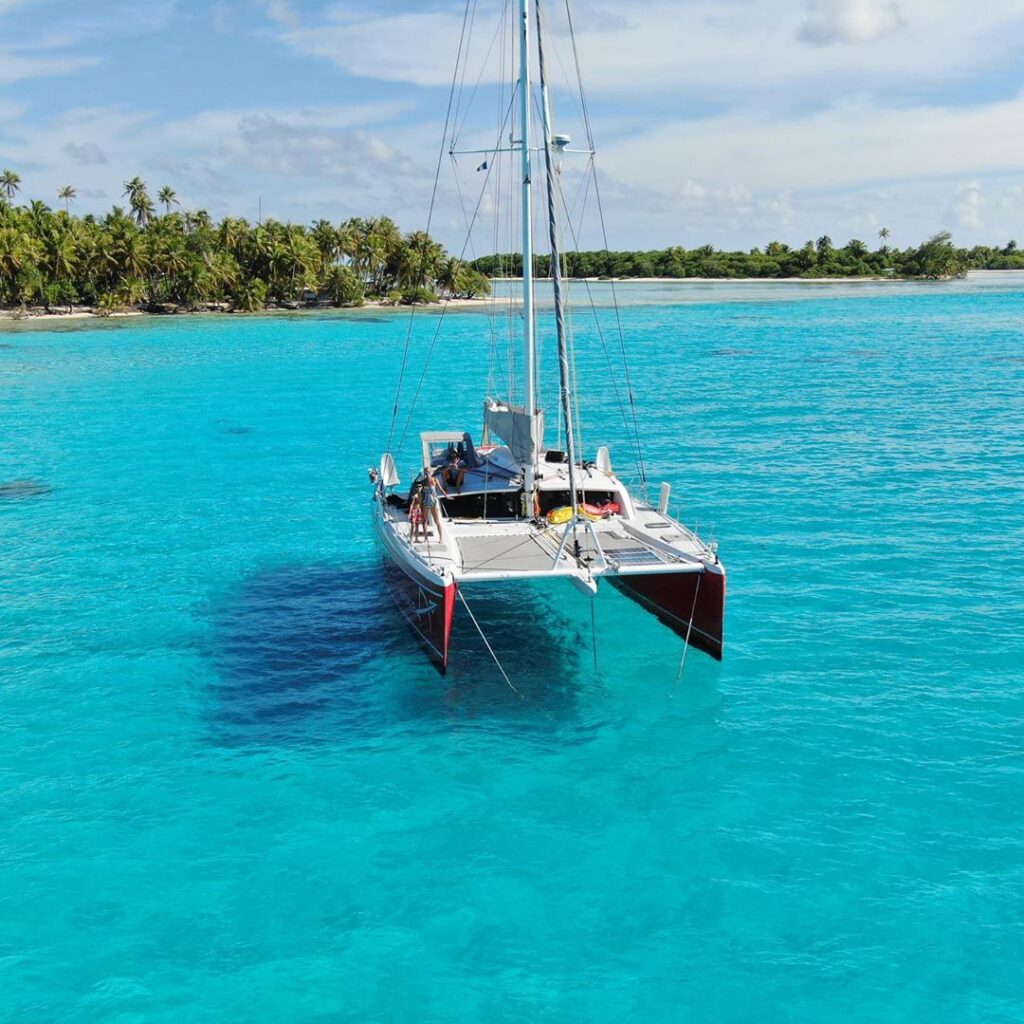
Which options are not worth bothering with?
Most owners skip installing a Generator and a Washing Machine because of the additional weight and fear of increased complexity and maintenance. The efficiency of Solar energy and Lipo batteries really makes a generator unnecessary these days, so I would recommend skipping these options unless you plan to sail in the higher latitudes or expect poor weather for long periods of time.
How are the electrics, plumbing etc
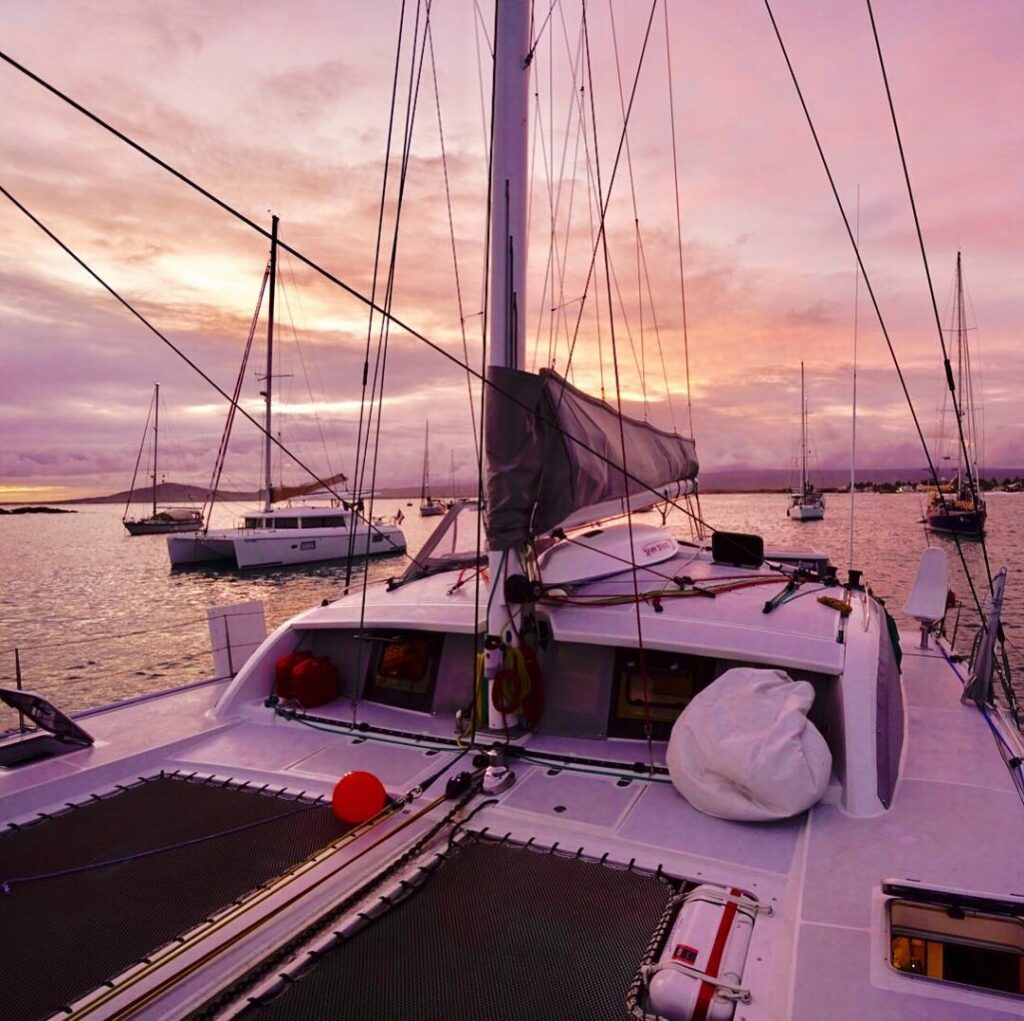
The electrical and plumbing systems are top notch, as you would expect from this builder. We’ve had the usual issues that all boats have with pumps failing and filters getting clogged, but this is more a boating issue than an Outremer one.
Is she easy to maintain? Servicing engines, standing rigging etc
Yes. Some catamarans have the engines under the stern bunks, but on the Outremer the engines are easily accessible via the transom. I had to change a fuel filter leaving Puerto Rico and it was nice to be in and out of the engine room within 4-5 minutes. Access and working room around the engines are outstanding and we didn’t even need to stop the boat. All running rigging is visible with nothing below decks and there are multiple halyard redundancies, oversized winches and all lines are dynema cored. Even the lifelines are dynema.
Is she easy to sail short-handed? To shorten sail?
Given her size (hull and rig) and the associated loads, I would say this boat can be single handed but is really designed for a sailing couple to manage. That said, on a light wind day one competent sailor could manage it alone (if your insurance lets you!). All running rigging leads back to the cockpit and there are more than enough winches to simultaneously ease the halyard and furl in the reef, but two people helping is more ideal. Just being honest.
What’s she like in heavy weather / a blow / big seas
Unfortunately we have some experience here. Compared to our last condo-maran, the Outremer is incredibly stable, especially on a reach or a run. Her extended bows and 24′ beam create a much flatter sailing platform and the raised bridgedeck eliminates a lot of the slamming that most cruising cats experience. But compared to a displacement craft like a monohull, she still hobbyhorses more when sailing into the wind and waves. This is further compounded by her speed capability and the captain needs to decide how much speed should be sacrificed for comfort heading upwind in rough conditions. Meanwhile, going downwind is a charm. We saw 40 knots of sustained wind in the aptly named windward passage between Haiti and Cuba, and the boat was so efficient we found ourselves comfortably cruising downwind at 10 knots with bare poles. The speed capability of this boat really changes the way you look at cruising and it’s hard not to get overly confident in your abilities.
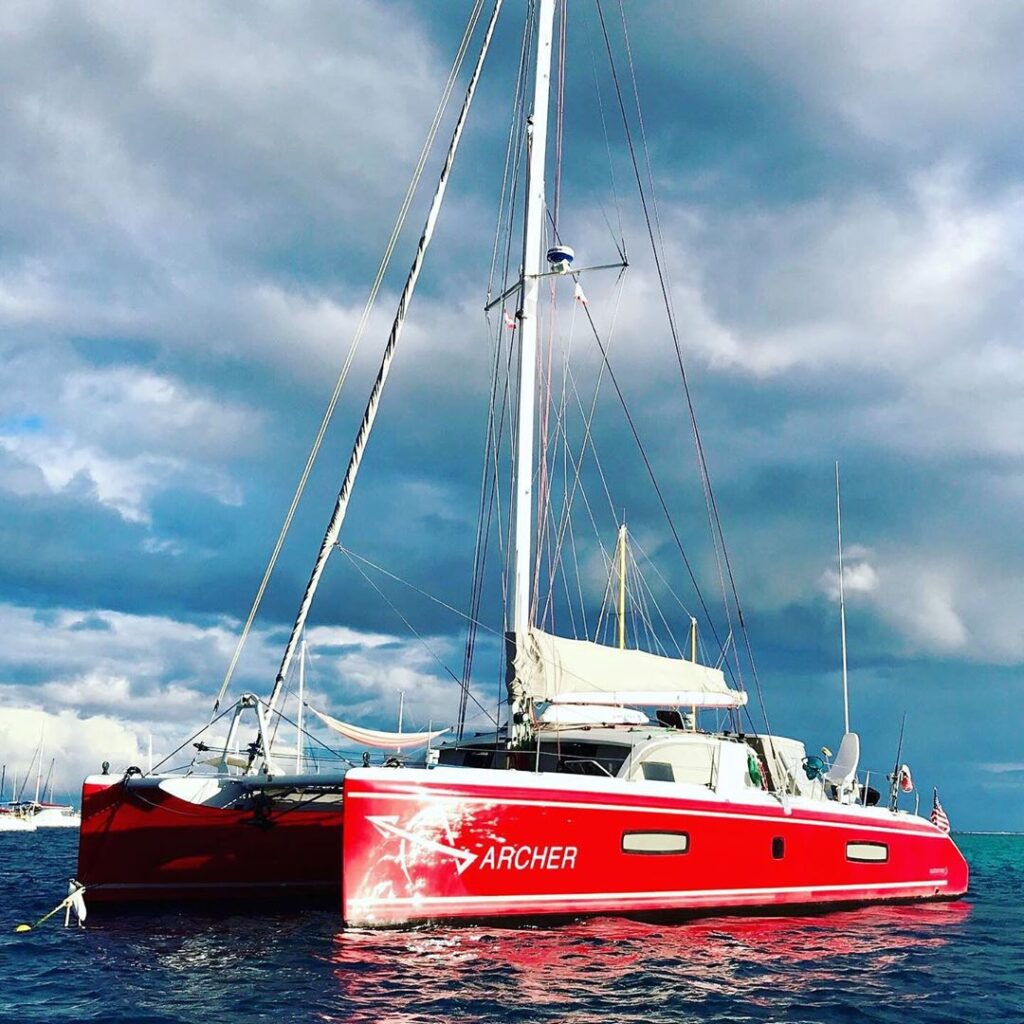
How is the helm position?
The helm can be controlled from four different positions: the carbon-fiber wheel at the helm seat, the two carbon-fiber tillers and the forward facing navigation table. On our boat, the helm seat is very well protected with a dodger and bimini installed by Outremer. It’s a little exposed from the Starboard side where no panel exists, but you could install one if you so desired.
How does she sail in light winds?
Lighter air is where this boat really shines versus its heavier competitors (think Catana, Balance and Seawind). The Outremer is the lightest of this category with the most aggressive sail plan, and as a result we RARELY find ourselves motoring. In fact, light air sailing is our favorite type of cruising because the seas are flat but the boat still maintains a decent boat speed. It’s a major feature that cannot be overlooked.
How does she sail close hauled?
As mentioned above, with the Staysail option and the use of the standard daggerboards, our boat can sail upwind as well as any cruising monohull. We typically find our best VMG around a 42 degree apparent wind angle which translates into a ~60 degree track upwind. That’s pretty amazing given all the compromises you make buying a catamaran versus a monohull. Any catamaran that claims better is either made of carbon fiber or is exaggerating.
Typically, what’s your average speed on passage?
We look to sail at a sustained ~9 knot average speed, equaling 215 nautical mile days. Remember, our young boys are aboard so this is sailing conservatively (we like to maintain a 10-11 knot average during daylight hours and then slow the boat down with a precautionary reef at night).
What’s she like under power? Speed, manouevrability?
Very balanced. This boat was designed to be sailed at speed and the daggerboards and rudders are appropriately sized to handle the conditions. The rig is also in the right place and we experience very little to no weather helm when using the mechanical tillers (which provide direct feedback).
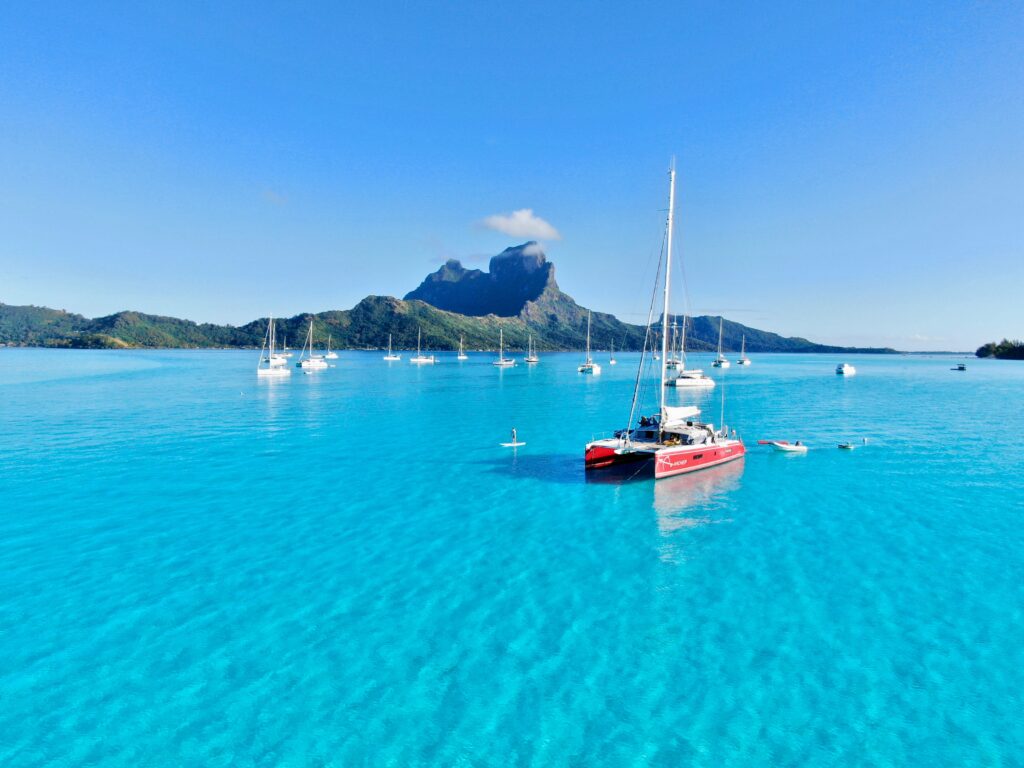
Is she easy to dock, what’s the visibility like?
Docking is not necessarily the easiest thing to do on this boat, although that may be a personal issue! However when compared to our last boat the extended bows add a lot of freeboard and windage, which makes docking in tight spaces difficult in a breeze. We also need to lower our daggerboards or we find ourselves sliding sideways too easily, so it is a new process we’ve had to manage learning. Needless to say, we prefer to anchor!
What is she like on the hook?
We find the boat pure joy on the hook. We’ve frequently had other families visiting us for a week or more with plenty of space. The rear cockpit is one of the largest in her class and our outside table seats 10 people comfortably (that’s just not possible on any monohull I’ve ever seen). Obviously a 50 foot “condomaran” with a fly bridge and a bow sofa area might be more comfortable, but we feel the tradeoff for a truly bluewater boat is worth it.
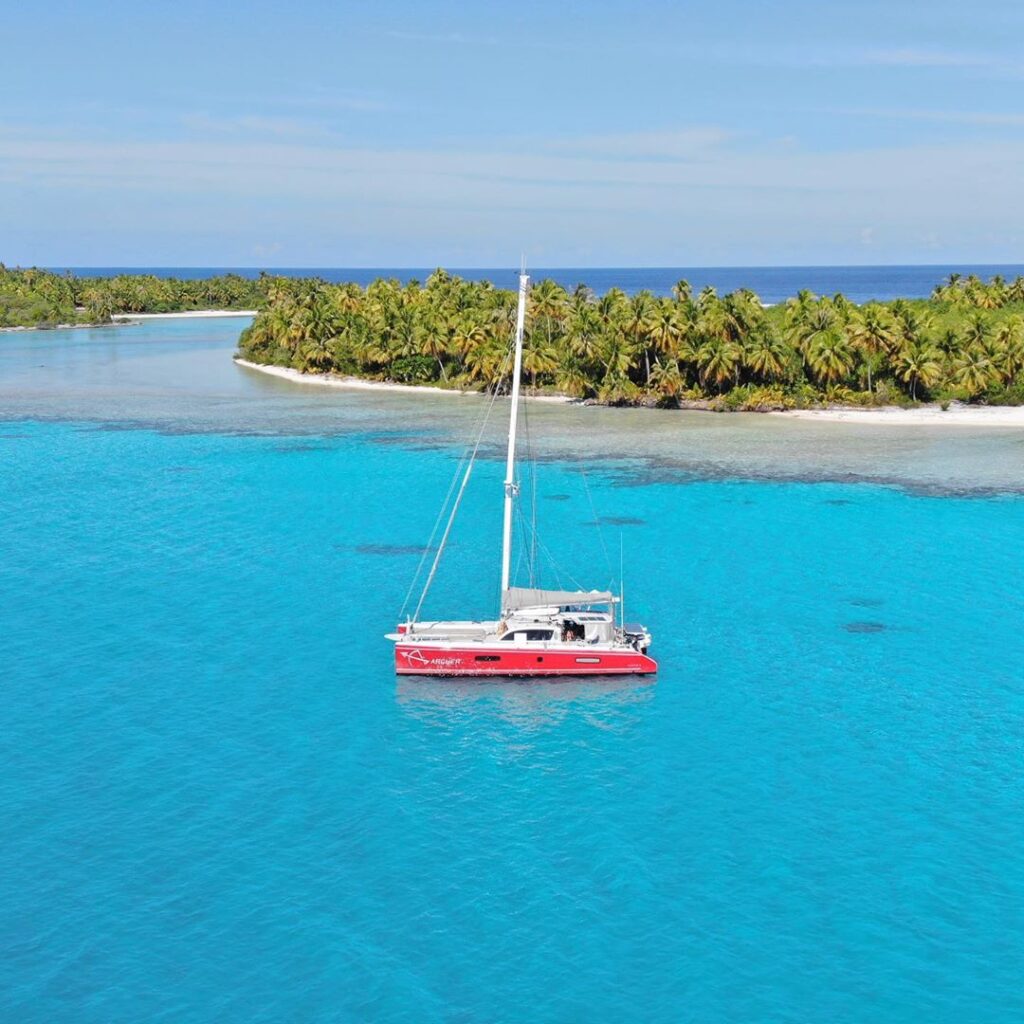
Is she comfortable down below? Cabins/saloon/galley/heads.
The Outremer is very comfortable down below, but it’s not going to win the award for spaciousness against a boat designed for the Charter market. The hulls are intentionally skinny, because skinny is fast, but they’re wide enough for queen size berths and plenty of closets. It’s also quite visible that this boat is robustly built because there are tight bulkhead openings, which I view as a real plus. It scares me to see the large openings in the competitive boats as bulkheads are a key element of rigid boat design. I feel the Outremer has balanced comfort with build quality and speed quite well.
How is the finish of the interior? Does she creak under sail?
The joinery fit and finish is top of its class. Yes, you can find better woodwork in a Hinkley, but Outremer does an outstanding job for the catamaran category. This is evident under-sail where almost no noise comes from the floors or the furniture, something that cannot be said about our last catamaran.
Is she good for hosting guests?
As discussed above, yes, excellent. It would help to have the four cabin charter version, but for our family the three cabin layout is preferred.
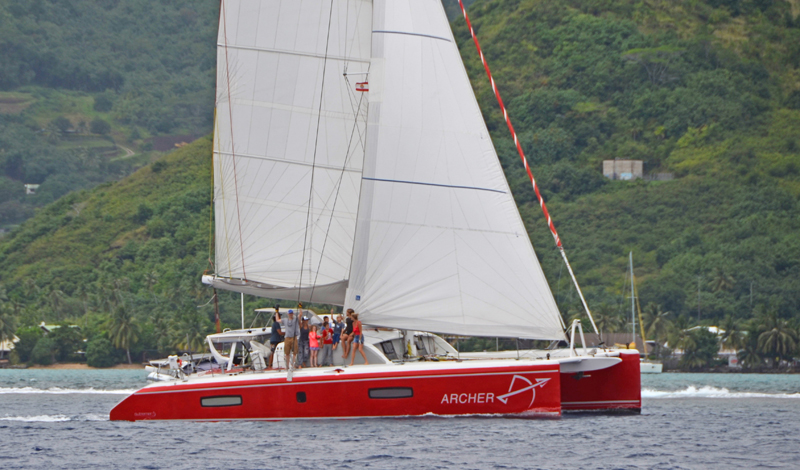
What kind of modifications have you done and why?
We added more solar to the bimini, which seems like a logical thing to do given the low cost and added benefit of extra power, especially with five people aboard. We also turned the guest shower into a standing closet and added a 12 volt freezer, allowing us to keep frozen foods longer. That’s all we’ve done.
Any plans for further customisation?If you were to swap her for another boat, what would that be?
As the saying goes, “the best boat is the one you have!” If you’re thinking about going cruising, just make it happen and enjoy the boat you have. Yes, we love our boat, but we’re no happier than our neighbors in a 30 year old monohull. Just get out there and go sailing!
How is the after sales service from Outremer?
I’m glad you asked, because we have been amazed at the support from Outremer. Although we are second hand owners, Outremer treats us like we bought the boat from them a couple weeks ago. Sure, the warranty is gone, but they have a dedicated owner phone number and email that they respond to within 12 hours, even on weekends! They also manage an “owner’s group” on Facebook where everyone can share ideas and get feedback from the brand. And recently, we found ourselves in need a new crossbeam and Outremer ordered us a new one without any payment up-front. It’s the kind of service you wish every company would provide, but sadly so few do. This is a real selling point and I want to commend them on supporting their brand for what will surely be a long future ahead.
Anything else you would add to help people thinking of buying an Outremer 51?
Look at more than just the brochure and the sales price. Understand that when you buy an Outremer you are buying a boat that has not cut any corners or used lesser materials to save cost or time. This is a boat where the bows are protected by several watertight crash lockers and the hulls are built with modern sandwich composites above the waterline, but thick, rock-solid monolithic laminates below. Weight savings is key, but not at the expense of structural integrity. Compare the boat weight and sail-plan versus the competition and you will find that no other boat comes close to offering what Outremer does. They build a simply fantastic boat.
the-sailing-family.com
